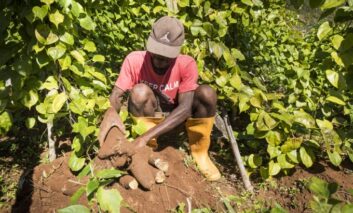Toll on health, education infrastructure revealed: 2,248 dead, 12,763 injured and 329 missing, official end of rescue operations
The Civil Protection Directorate, which plays the role of executive secretariat of the National Risk and Disaster Management System, announced that it officially ended, on Friday September 3, the search and rescue mission in the three departments of the great South. . This announcement coincides with the publication of the progress report of the National Emergency Operations Center (COUN) which establishes the death toll at 2,248, while 12,763 people are injured and 329 others are missing in the three departments. affected.
Citing a satellite assessment carried out by the World Bank, the report specifies that the economic damages and losses suffered by the country are estimated at 1.5 billion dollars, or about 10% of the national gross domestic product. In addition, the earthquake directly affected around 690,000 people, which represents 40% of the total population of Grand’Anse, Nippes and South.
In the three affected departments, the report continues, 83,770 houses were either slightly or heavily damaged and 53,815 destroyed. The first assessments carried out after the quake showed that the percentage of houses destroyed in rural areas – where up to 80% of the affected population live – was on average 5 to 7 times higher than in urban centers.
In addition, an assessment of health structures, conducted by the Ministry of Public Health and Population (MSPP) in the departments of Grand’Anse, Nippes and South, reports 62 structures seriously or partially damaged.
The preliminary results of an assessment, conducted by the Ministry of National Education and Vocational Training, show 171 schools completely destroyed, or 16% of the school population in the affected areas. This partial assessment is provided on the basis of an assessment of 1,064 schools out of 2,800 existing in the three aforementioned departments.
In addition to hospitals and health centers, damaged or destroyed schools, the magnitude 7.2 earthquake severely shook bridges, facilities and other critical infrastructure in the Great South region. “The drinking water supply networks have suffered significant damage in several communities, making access to water very difficult. Agriculture and livestock have also been affected by the numerous reported land movements ”, underlines the progress report.
Haiti’s education sector was severely affected in the earthquake, which destroyed or badly damaged more than 250 hospitals and schools.
Nearly 106 public and non-public schools are in various states of damage in the Nippes Department. More than 90 national schools were left damaged in the South Department, and another 70 schools were destroyed in Grande-Anse, according to officials in the National Education Ministry.
As of Aug. 23, PAHO/WHO (The Pan American Health Organization) counted 59 health facilities that were damaged out of 88 facilities evaluated after the 7.2 magnitude earthquake that struck Haiti’s southwest region.
Among the facilities damaged, 15 are located in the Grand-Anse department, seven in the Nippes department and 37 are found in the Southern department.
Digicel launches Haiti donation site, vows to match earthquake relief funds
After hundreds of people reached out to Digicel staff members In the days following the Aug. 14 earthquake asking how the telecommunications company planned to assist, Digicel decided to launch a donation site to collect funds for non-profit partners groups such as Fokal, Hope for Haiti and Health Equity International/St. Boniface Hospital, known as HEI/SBH. Digicel also pledged to match every donation up to $10,000, said Marteen Boute, Digicel Haiti’s chief executive officer.
Prior to launching the site, donations.digicelinternational.com, on Aug. 25, Digicel had donated to local organizations and health facilities.
In addition to donations, the diaspora has also been assisting survivors by sending Digicel top-ups, the amount of time people can talk on the phone. Throughout the month, Digicel provided five times more credit and 5 gigabytes more to customers who sent top-ups to a Digicel number in Haiti.
“We wanted to make sure that people got more time for their bucks,” said Christophe Justens, Digicel International’s general manager. “It wasn’t all about sending money, we wanted to facilitate the basic needs. From our perspective, that’s communication.”
The amount of top-ups sent to Haiti daily has been 50 percent higher than usual, Justens said.
“It’s something that is close to my heart,” Justens said. “I feel for the people and as an organization, we wanted to see how we could help.”
The company did not say how much has been donated on the site so far.




